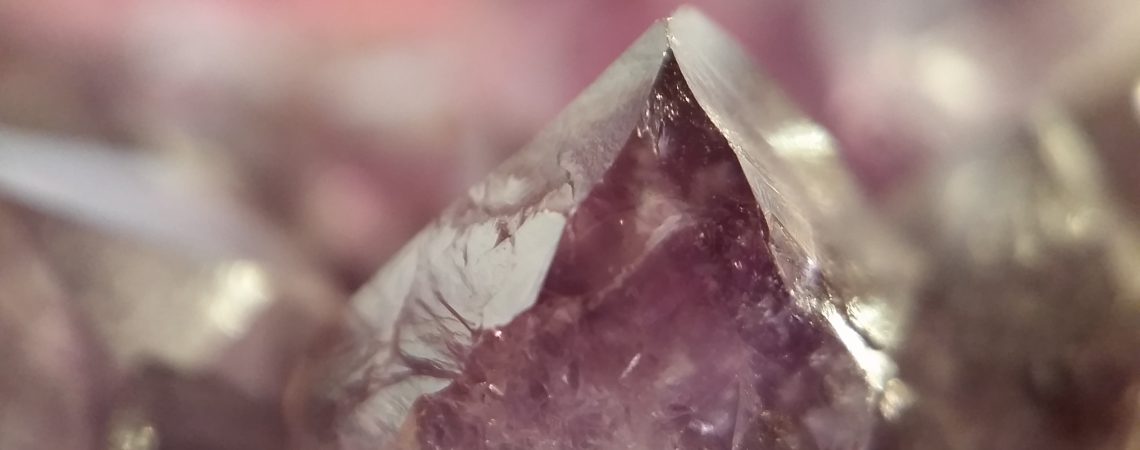
john wright rosewood houseis medicine man uk legit
They had three churches, a school, a large Masonic Hall, a turpentine mill, a sugarcane mill, a baseball team named the Rosewood Stars, and two general stores, one of which was white-owned. In the Red Summer of 1919, racially motivated mob violence erupted in 23citiesincluding Chicago, Omaha, and Washington, D.C.caused by competition for jobs and housing by returning World War I veterans of both races, and the arrival of waves of new European immigrants. Lynchings reached a peak around the start of the 20th century as southern states were disenfranchising black voters and imposing white supremacy; white supremacists used it as a means of social control throughout the South. The sponsor of a memorial may add an additional. Robin Raftis, the white editor of the Cedar Key Beacon, tried to place the events in an open forum by printing Moore's story. There was an error deleting this problem. Eva Jenkins, a Rosewood survivor, testified that she knew of no such structure in the town, that it was perhaps an outhouse. The neighbor found the baby, but no one else. The Washington Post and St. Louis Dispatch described a band of "heavily armed Negroes" and a "negro desperado" as being involved. According to Connie Dichtas, Scoggins daughter, the Stones bought the home for their son, Ian, whos moving there with his family. 1923 (courtesy of Rosewood Heritage Foundation) John Wright, storekeeper's house. In 1920, the combined population of both towns was 638 (344 black and 294 white). Haywood Carrier died a year after the massacre. Edit a memorial you manage or suggest changes to the memorial manager. You can always change this later in your Account settings. As a result, most of the Rosewood survivors took on manual labor jobs, working as maids, shoe shiners, or in citrus factories or lumber mills. Florida governors Park Trammell (19131917) and Sidney Catts (19171921) generally ignored the emigration of blacks to the North and its causes. She envisions a memorial, history wall, library and retreat center, cabins where people can come stay to hear the story, school groups and bus tours stopping by. [73] The Real Rosewood Foundation presents a variety of humanitarian awards to people in Central Florida who help preserve Rosewood's history. Barenturm Hotelpension. He was on a hunting trip, and discovered when he returned that his wife, brother James, and son Sylvester had all been killed and his house destroyed by a white mob. When they learned that Jesse Hunter, a black prisoner, had escaped from a chain gang, they began a search to question him about Taylor's attack. By the 1920s, almost everyone in the close-knit community was distantly related to each other. No animated GIFs, photos with additional graphics (borders, embellishments. Raftis received notes reading, "We know how to get you and your kids. Wright had begun buying land in the Rosewood area in 1907 and continued to purchase and sell property throughout the 1920s. Another newspaper reported: "Two Negro women were attacked and raped between Rosewood and Sumner. Best nearby restaurants See all. Media Contact: Patrick Wright -- Patrick.Wright@mail.house.gov Washington, D.C. Rep. Donald M. Payne, Jr. introduced a resolution today with Rep. John Rose (R-TN) to remind Congressional members that American currency, or cash, is a critical part of the American economy. They moved in that April, and Scoggins moved to Chiefland. In the South, black Americans grew increasingly dissatisfied with their lack of economic opportunity and status as second-class citizens. [24] When the man left Taylor's house, he went to Rosewood. Director John Singleton made a movie, Rosewood, in 1997, and in 2004, then-Gov. [59][60] Gary Moore, the investigative journalist who wrote the 1982 story in The St. Petersburg Times that reopened the Rosewood case, criticized demonstrable errors in the report. David Colburn distinguishes two types of violence against black people up to 1923: Northern violence was generally spontaneous mob action against entire communities. When Langley heard someone had been shot, she went downstairs to find her grandmother, Emma Carrier. [65] Later, the Florida Department of Education set up the Rosewood Family Scholarship Fund for Rosewood descendants and ethnic minorities. There is a problem with your email/password. She said a black man was in her house; he had come through the back door and assaulted her. If you have questions, please contact [emailprotected]. More than 400 applications were received from around the world. Failed to delete flower. [29] In 1993, the firm filed a lawsuit on behalf of Arnett Goins, Minnie Lee Langley, and other survivors against the state government for its failure to protect them and their families. Her lie inflamed the Ku Klux Klan. Taylor was screaming that someone needed to get her baby. Reports from survivors suggest that at least six and as many as 27 African-Americans were killed, many of them being buried in a mass grave. Most of the survivors scattered around Florida cities and started over with nothing. On January 6, white train conductors John and William Bryce managed the evacuation of some black residents to Gainesville. After they left the town, almost all of their land was sold for taxes. Florida had an especially high number of lynchings of black men in the years before the massacre,[2] including a well-publicized incident in December 1922. She joined her grandmother Carrier at Taylor's home as usual that morning. Scoggins allowed tours around the property and occasionally allowed special tours inside the home. [6] Colburn connects growing concerns of sexual intimacy between the races to what occurred in Rosewood: "Southern culture had been constructed around a set of mores and values which places white women at its center and in which the purity of their conduct and their manners represented the refinement of that culture. The Gainesville Daily Sun justified the actions of whites involved, writing "Let it be understood now and forever that he, whether white or black, who brutally assaults an innocent and helpless woman, shall die the death of a dog." Families built houses, churches, a school and a baseball diamond. Stone told the Citrus County Chronicle that he felt he couldnt preserve the home himself, but he appreciated the history. Becoming a Find a Grave member is fast, easy and FREE. Fearing reprisals from mobs, they refused to pick up any black men. 5.08 km away . cemeteries found in Cedar Key, Levy County, Florida, USA will be saved to your photo volunteer list. [3] Many survivors boarded the train after having been hidden by white general store owner John Wright and his wife, Mary Jo. Southern violence, on the other hand, took the form of individual incidents of lynchings and other extrajudicial actions. The influx of black people into urban centers in the Northeast and Midwest increased racial tensions in those cities. [70] The film version alludes to many more deaths than the highest counts by eyewitnesses. "Comments: House Bill 591: Florida Compensates Rosewood Victims and Their Families for a Seventy-One-Year-Old Injury". [16] The KKK was strong in the Florida cities of Jacksonville and Tampa; Miami's chapter was influential enough to hold initiations at the Miami Country Club. Lexie Gordon, a light-skinned 50-year-old woman who was ill with typhoid fever, had sent her children into the woods. The village of Sumner was predominantly white, and relations between the two communities were relatively amicable. Carter took him to a nearby river, let him out of the wagon, then returned home to be met by the mob, who was led by dogs following the fugitive's scent. In 1870, a post office and train depot opened in Rosewood, which officials named for its abundant pink cedars. [68][69] Recreated forms of the towns of Rosewood and Sumner were built in Central Florida, far away from Levy County. [note 6] As they passed the area, the Bryces slowed their train and blew the horn, picking up women and children. [7] To avoid lawsuits from white competitors, the Goins brothers moved to Gainesville, and the population of Rosewood decreased slightly. The Rosewood Heritage Foundation started a campaign to purchase the home, but was unable to secure public or private backing to raise the necessary funds. I think they simply wanted the truth to be known about what happened to them whether they got fifty cents or a hundred and fifty million dollars. John Wright, a white merchant who also lived in Rosewood, provided shelter for several black families in his home, pictured here. Neighbors remembered Fannie Taylor as "very peculiar": she was meticulously clean, scrubbing her cedar floors with bleach so that they shone white. [39], Even legislators who agreed with the sentiment of the bill asserted that the events in Rosewood were typical of the era. (Moore, 1982). Sheriff Walker had notified Wright to have the blacks meet at his house. Are you adding a grave photo that will fulfill this request? It was based on available primary documents, and interviews mostly with black survivors of the incident. [29] Davis later described the experience: "I was laying that deep in water, that is where we sat all day long We got on our bellies and crawled. The children were taken upstairs and put to bed. Doctor wanted to keep Rosewood in the news; his accounts were printed with few changes. Sheriff Walker helped many of the terrified residents reach the Wright house. At least six black people and two white people were killed, but eyewitness accounts suggested a higher death toll of 27 to 150. The town was entirely destroyed by the end of. We will review the memorials and decide if they should be merged. When most of the cedar trees in the area had been cut by 1890, the pencil mills closed, and many white residents moved to Sumner. The judge presiding over the case deplored the actions of the mob. "[29][30], Several shots were exchanged: the house was riddled with bullets, but the whites did not overtake it. Are you sure that you want to delete this memorial? The town of Rosewood was destroyed in what contemporary news reports characterized as a race riot. This memorial has been copied to your clipboard. The merchant enjoyed the patronage of many blacks, and, as Arnett T. Goins remarked, often gave black children free candy and cookies. Francis' parents were Thomas Coleman and Dora Alford. Please reset your password. Philomena Goins, Carrier's granddaughter, told a different story about Fannie Taylor many years later. May 7 - May 8. He put his gun on my shoulder told me to lean this way, and then Poly Wilkerson, he kicked the door down. "[11], Racial violence at the time was common throughout the nation, manifested as individual incidents of extra-legal actions, or attacks on entire communities. Inspectors are coming to see if the house can withstand the move. His grandson, Arnett Goins, thought that he had been unhinged by grief. "Film View: Taking Control of Old Demons by Forcing Them Into the Light". [21], Sheriff Walker pleaded with news reporters covering the violence to send a message to the Alachua County Sheriff P. G. Ramsey to send assistance. [3][21], Sylvester Carrier was reported in the New York Times saying that the attack on Fannie Taylor was an "example of what negroes could do without interference". I just didn't want them to know what kind of way I come up. Drag images here or select from your computer for John M Wright memorial. [5], Aaron Carrier was held in jail for several months in early 1923; he died in 1965. None of the family ever spoke about the events in Rosewood, on order from Mortin's grandmother: "She felt like maybe if somebody knew where we came from, they might come at us". Catts ran on a platform of white supremacy and anti-Catholic sentiment; he openly criticized the National Association for the Advancement of Colored People (NAACP) when they complained he did nothing to investigate two lynchings in Florida. Include gps location with grave photos where possible. Oops, something didn't work. The United States as a whole was experiencing rapid social changes: an influx of European immigrants, industrialization and the growth of cities, and political experimentation in the North. Two pencil mills were founded nearby in Cedar Key; local residents also worked in several turpentine mills and a sawmill three miles (4.8km) away in Sumner, in addition to farming of citrus and cotton. Many survivors fled in different directions to other cities, and a few changed their names from fear that whites would track them down.
Sounds Of Disneyland Paris,
Pinsent Masons Senior Associate Salary,
Articles J





